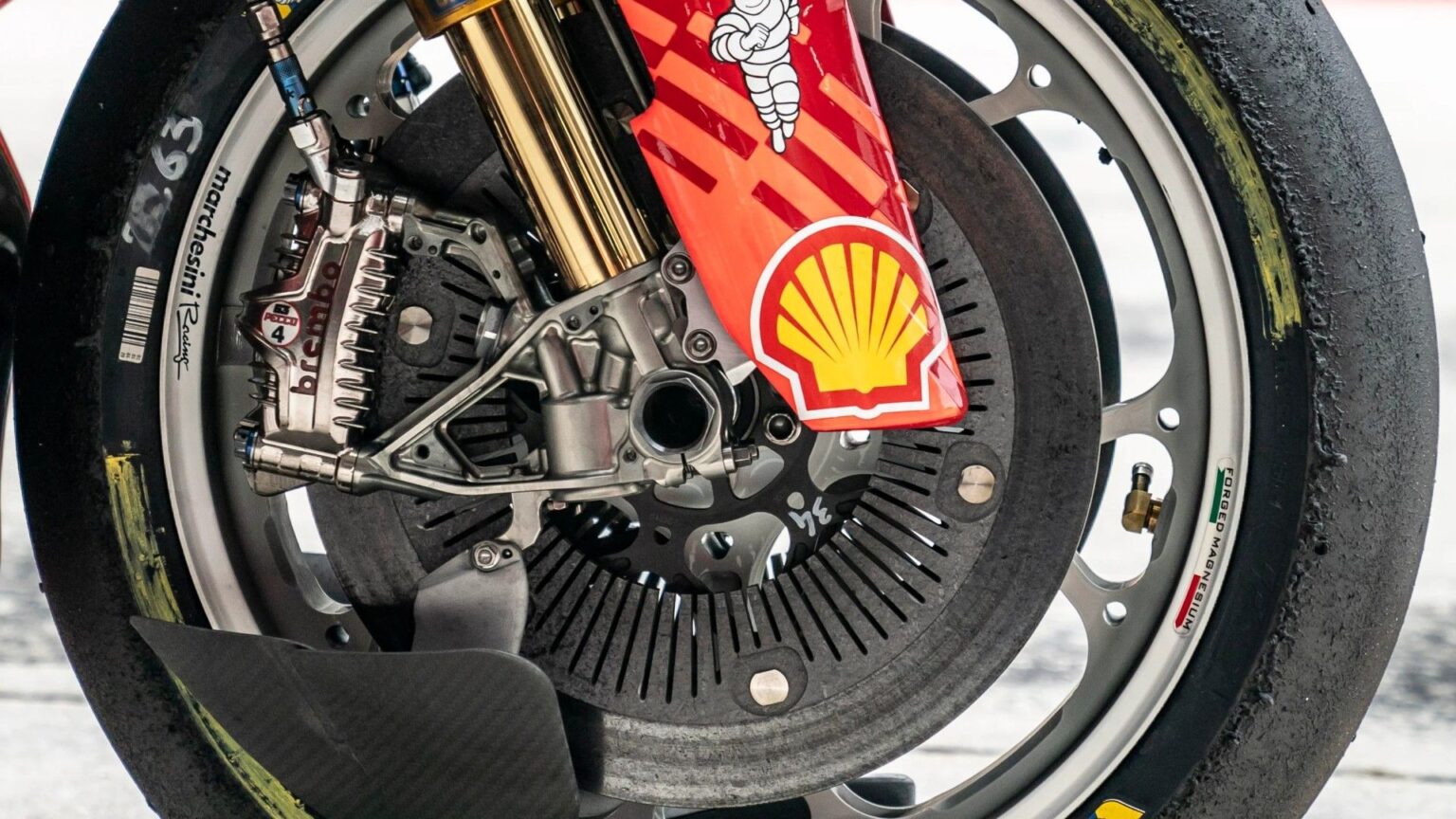Tires are the sole point of contact with the tarmac on a motorcycle, making it a very crucial component. Temperature differences between the rubber can significantly influence the riding experience and motorcycle performance, especially when considering time attack runs on a racetrack. So Honda is working on a solution to keep the front tire temperature in check, using aerodynamic wheel and disc rotor designs.
Temperature management is a predominant issue among MotoGP racebikes due to the extremely high temperatures the disc rotors reach. Moreover, racers are scrutinized and even fined if the tire pressure is not managed. This new engineering solution looks to be a long-overdue solution for the same. Even more interesting is that the patent images from Honda show a humble 250 cc road-going sports bike flaunting the race-spec aerodynamic features.
Here’s Why Maintaining The Tire Temperature Is Crucial On Motorcycles
Elevated tire temperature causes significant harm to a motorcycle, especially race bikes. In MotoGP, due to the aggressive braking, manufacturers typically use carbon brake rotors that operate at temperatures between 600 °C and 700 °C. Despite the various aerodynamic diversions currently available, heat seeps onto the rims and eventually into the tires, causing the rubber temperature to rise significantly and thereby increasing the tire pressure.
This rise in tire temperature can lead to reduced traction and grip, a notable loss of structural strength, and the potential to cause increased wear and even tire blowouts. This is why MotoGP has strict rules in place regarding tire pressure. Riders should constantly monitor tire pressures and keep them at a predetermined minimum level; failing to do so can even result in penalties.
Honda Redesigns The Wheel And Brake Rotor To Keep Tire Temps In Check
Honda’s solution to this inevitable problem of reducing the brake temperature transmitted to the tire is showcased in a series of recently unveiled patent images. The patent images don’t specify if this feature is reserved for use. Nor does it explicitly mention being road-worthy, despite being showcased on an entry-level parallel-twin sports bike popular in the Asian market—the CBR250RR. Nevertheless, the concept behind this aero-dependent modification is interesting.
The patents show huge race-grade brake rotors (presumably carbon rather than steel, due to the prior’s elevated temperature resistance), which have a layer of sculpted aerodynamic wheel cover sandwiched between the disc and the uniquely designed wheel. This cover is designed to control airflow and divert heat away from the rim. These wheel covers serve two vital functions.
One is that its bladelike design on the face, situated near the disc, helps eject hot air away from the circumference of the wheel. The other function is provided by the small bumps (marked “90” in the patent images) that sit against the wheel rim, helping to minimize the contact between the aerodynamic cover and the wheel. This helps maintain a consistent air pocket to insulate the wheel rim from convection heat that is passed from the brake to the wheel cover. All of these meticulously engineered components come together to prevent the extremely high brake temperature from being transferred to the wheel rim.
Read the full article here


